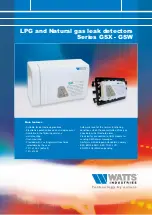
92
93
Choosing the Right
Coil for the Job
There are five main things you should consider
when deciding which coil is best for your terrain
and target:
Coil Size and Depth
A larger coil will typically find targets buried deeper
in the ground but they can be less sensitive to
smaller targets. A smaller coil is typically more
sensitive to small targets, but does not go as deep as
a larger coil.
Mineralisation
A Monoloop coil will often have improved
performance over a Double-D coil but can be more
difficult to Ground Balance and therefore possibly
more noisy. A Double-D coil is often more stable in
heavily mineralised areas.
Terrain and Vegetation
A small coil can be easier to manoeuvre through
thick scrub or rough terrain. A smaller coil is also a
lighter weight than a larger coil.
Discrimination
In areas where discrimination is required a
Double-D coil is necessary for Iron Reject to work. In
high trash concentrations a smaller coil is preferable.
Search Pattern
A Double-D coil will typically provide a 'blade-like'
detection pattern from the toe to the heel of the coil,
which gives excellent ground coverage. A Monoloop
coil has a detection field that is typically cone
shaped, which requires overlapping of sweeps to
ensure thorough ground coverage.
Small,
Shallow
Nugget
Large, Deep
Nugget
Highly
Mineralised
Less
Mineralised
Open
Ground
Heavy
Scrub
Iron
Disc.
10" x 5"
Elliptical
Double-D
15” x 12"
Semi-Elliptical
Double-D
18” Round
Double-D
8” Round
Monoloop
11” Round
Monoloop
15” x 12"
Semi-Elliptical
Monoloop
18” Round
Monoloop
Note: In some
circumstances non Minelab
Double-D and Monoloop
coils will work on the GPX-
4500. However, there are
limitations which mean
some functions will not
work properly. In some
cases the use of coils not
designed for the GPX-4500
may cause the detector to
be unstable and noisy.
– The shaded areas indicate each coils recommended uses.
– May operate well in Enhance or Sensitive Smooth timings.
Содержание GPX-4500
Страница 6: ...6 7 List of Parts...







































